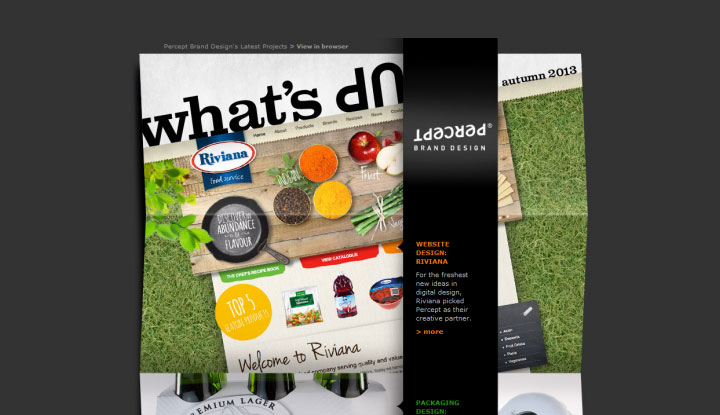Are your marketing emails producing results? If not, chances are your email marketing design leaves a lot to be desired. All too often, companies give little to no thought to the content of the emails they send. Merely sending occasional messages to a list of potentially interested people isn’t enough. Those marketing messages need to be designed in a strategic and effective way. Sound complicated? Maybe so, but the truth is you can get superior results by keeping a handful of things in mind.
Essential Email Marketing Design Tips
-
Design
When referencing the design of a marketing email, it refers to how it looks when it is opened in an email client. More than anything, it needs to be approachable and easily digestible. Therefore, it should be broken up into several small paragraphs with short, relevant subheadings. The content can also be broken up by images. When opened, a reader should be able to scan the email and get the gist of it before actually reading it. These days, people are accessing their emails across an array of devices, all with different screen sizes. So, it makes sense to ensure your email template utilizes a responsive design for proper display on any device. Also, the look and feel of the email should be consistent with your company’s brand, logo, and with the color scheme used on other marketing materials.
-
Calls to Action
You’ll notice that I’m not talking about just one call to action, but several. Indeed, your email should be punctuated by several prominent calls to action to ensure recipients know what to do when they’re ready to act. Your calls to action should include words that drive, well, action. They should be set apart from the rest of the content so that readers aren’t left wondering what to do next.
-
Content Relevance
More than anything, your emails should be relevant to those who receive them. The best way to ensure this is by using segmentation. You can segment your audience based on virtually anything, including e-commerce data, location, and basic demographics. The overall tone of your email should be personal and friendly. People should not feel like they’re receiving a hard sell, but more like they’re reading a message from a friend. Finally, keep social sharing in mind. Include a link to a web version of the email, and provide social sharing buttons so people can spread the word.
-
Promotions and Incentives
It’s crucial to communicate a sense of urgency in the emails you send. The best way to do that is by including special offers and promos in your emails. They shouldn’t be open-ended, though. Make a point of highlighting the fact that they will expire soon.
-
Timing
As with so many things, timing is everything when it comes to email marketing. If you’ve promised subscribers a regular email newsletter, be sure to follow through. Establish a publishing calendar and stick to it. Also, have a goal in mind for the emails you send. Only send them when it makes sense to do so. They should have a purpose. For instance, send new emails in the days leading up to a big sale or to alert subscribers to a new product or service. Whatever you do, don’t overdo it. If you barrage readers, you’re going to alienate them.
These five tips are easy to implement, so don’t wait! Put them to work for you right away. What effective techniques have you used to get traction form your email marketing campaigns? I’d love to hear them in the comments section below.
This article has been edited and condensed.
Clancy Clarke is the Organic Search manager at DesignCrowd, a design crowdsourcing platform making crowdsourcing more accessible for small business. Clancy has over 7 years of online marketing experience, a passion for analytics and a degree in Petroleum Engineering from the University of New South Wales. Connect with @designcrowd on Twitter.
© YFS Magazine. All Rights Reserved. Copying prohibited. All material is protected by U.S. and international copyright laws. Unauthorized reproduction or distribution of this material is prohibited. Sharing of this material under Attribution-NonCommercial-NoDerivatives 4.0 International terms, listed here, is permitted.













